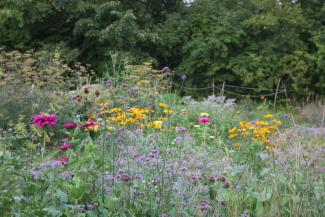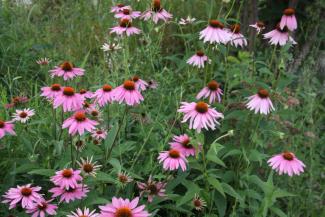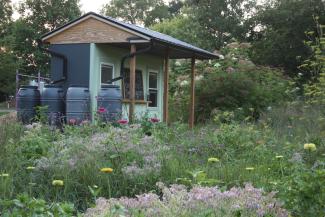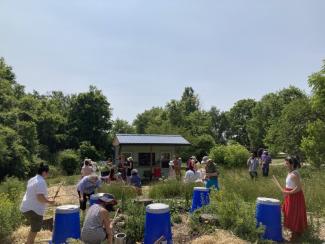The Community Food Forest at Leslie Park
2021 WCCD School & Community Habitat Grant Awardee
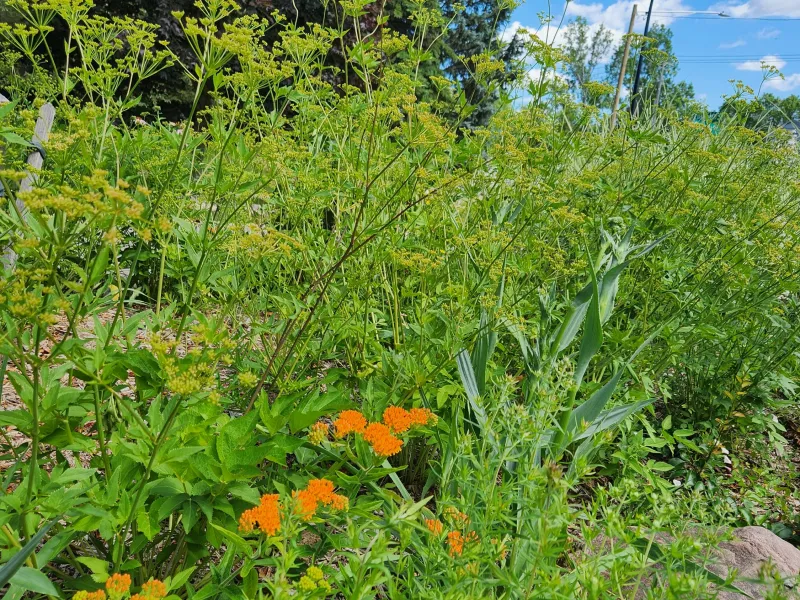
The Community Food Forest at Leslie Park is a public food forest community resilience project brought forth by a diverse coalition of Ann Arbor residents. Led by ShuNahSii Rose and Zev Greenwood, the Project Manager and Assistant Project Manager, they applied for the WCCD School & Community Habitat Grant in 2021, with the purpose to "serve as a pilot project demonstrating the significant merits of this small scale food forest model, and creating a template through which similar projects can be implemented in parks all over the city."
Their application stood out as demonstrating long term community involvement and investment in the project at Leslie Park, and notably, their work in building relationship with the Ann Arbor City Parks demonstrated this collaboration of City government and residential involvement in their neighborhood. They have cultivated diversity of plants as well as community of members with a diversity of backgrounds and skillsets, and continue to host regular gatherings for medicinal plant walks, educational events, and workdays.

While they already had much of their gardens and food forest previously planted, and designs plans as show below, they were awarded native plant materials in Fall of 2021 and Spring of 2022 to add to their existing plantings. It has been a pleasure to work with and learn from them, and we're excited to see their project flourish, and for their work to inspire more projects of similar nature.
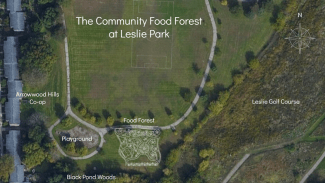
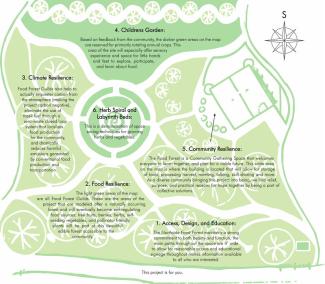
2022 Project Report:
by Zev Greenwood
9/5/2022
Installation
As the Community Food Forest was started in Spring 2020 and the design was already well underway, we were able to incorporate our plants awarded by WCCD to existing garden beds and Food Forest guilds. We received our award in two batches, a larger one in Fall 2021, and a smaller one in late Spring 2021, and the Food Forest Coalition worked together to site and plant them among our existing plantings. The addition of these plants went a long way toward filling out the Food Forest, greatly supporting our native plant diversity, pollinator forage, and establishing herbal medicines.
Challenges
One of the biggest challenges in caring for the Community Food Forest is having no on-site water source. We work with this in a variety of ways to help our plants thrive, including terracotta water stakes that release water into the soil only when it is needed, and deep mulching and companion planting to help with water retention. We also have rain barrels and a water tote that can be refiled manually and are used for watering when needed.
Another point of growth is working in concert with the local wildlife. It is a core tenant of this project that the community served by the Food Forest includes the plants and animals in our local ecosystem; creating space for local pollinators, birds, and other wildlife alongside human community. This means we have no fence around the project, and we are learning how to best share space with animals such as rabbits and deer who have recently discovered the Food Forest as a food source. We work this in a variety of ways such as fencing around young fruit trees and coffee grounds scattered as a deterrent for squirrels and rabbits. However, we have discovered that one of the best ways to protect our young plants is by letting many of the volunteer plants that the deer want to eat grow big around them. We noticed the deer are often eating the wild lettuce, lamb’s quarters, and other volunteer plants, and then leaving alone our nearby plantings. We will continue to work with this principle in our planning and maintenance going forward.
Plan for the First Year
The Community Food Forest is tended by the dedicated efforts of the Food Forest Coalition and the larger community. Coalition members come out on an as-needed basis based on weather, gardening needs, etc. and we have weekly workdays where anyone in the community is invited to come out to help tend the space, and often to take seasonal harvest home with them. These workdays include planting, weeding, mulching, watering, and harvesting. As the plants mature and establish they will need less active tending, as the Food Forest is designed to mimic a natural forest and eventually become a self-regulating system, the plants working together to build soil, retain water, attract pollinators, etc.
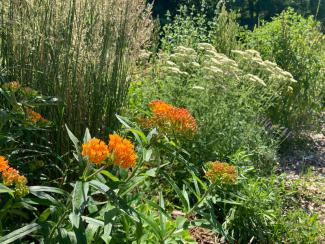
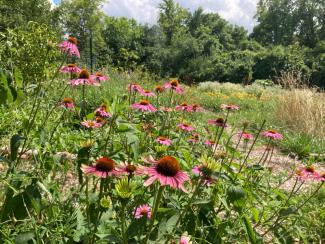
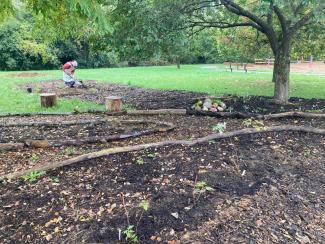
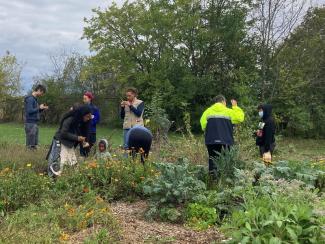
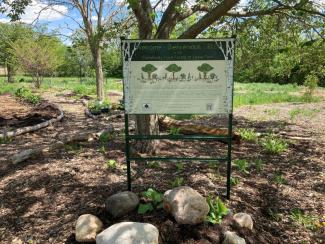
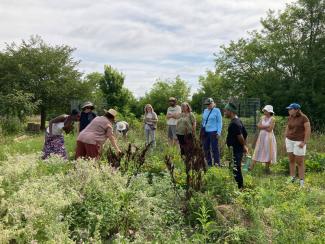
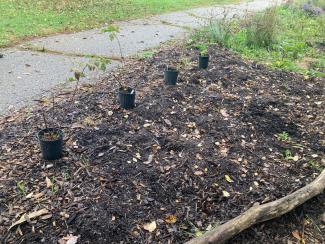
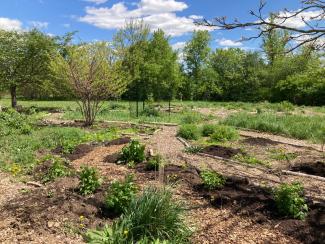
2023 Project Report - 1 year later:
by Zev Greenwood
8/3/2023
The Community Food Forest at Leslie Park is thriving and we are so grateful for the support from WCCD that helped us get to this point! Started in Spring of 2020, this project was created for the community, by the community as a thriving, self-regulating, small-scale food source that serves as an educational hub and inspirational pilot project on the northside of Ann Arbor. The native perennials we received as part of our WCCD grant are flourishing, as they set down deep roots to fill essential functions in the food forest ecosystem for years to come. We have a mix of native and non-native plants in the project, acting as food, medicine, soil builders, pest confusers, and more. It is such a striking lesson and reminder to see how well the native plants do even amidst the unpredictable conditions of climate change.
A big development at the Community Food Forest this year is the addition of our community engagement building! This building is a small but mighty contribution to restoring the commons - it helps us respond to our state of ecological crisis by catching rainwater that supports a self-regulating food system and it helps us strengthen community participation by making things easier - we can store tools, have shade, announce events on-site, and more easily distribute harvest.
This tiny little area of earth, even so early in the restoration process, is brimming with life and community. We know that in the moment of climate crisis, we don’t need more lawns or status quo “land management” - we need creative solutions that prioritize habitat restoration and revitalizing of the commons. The Community Food Forest offers not only food and medicine as harvest, but resting places, for people, pollinators, songbirds, and the wide of ecological community. Thank you to WCCD for supporting this vital project.
